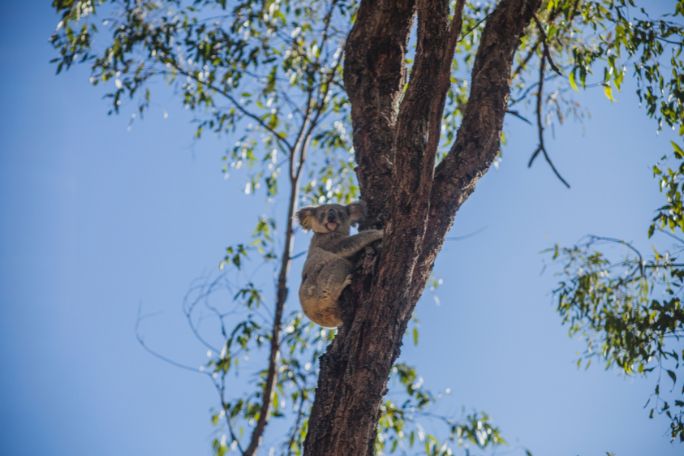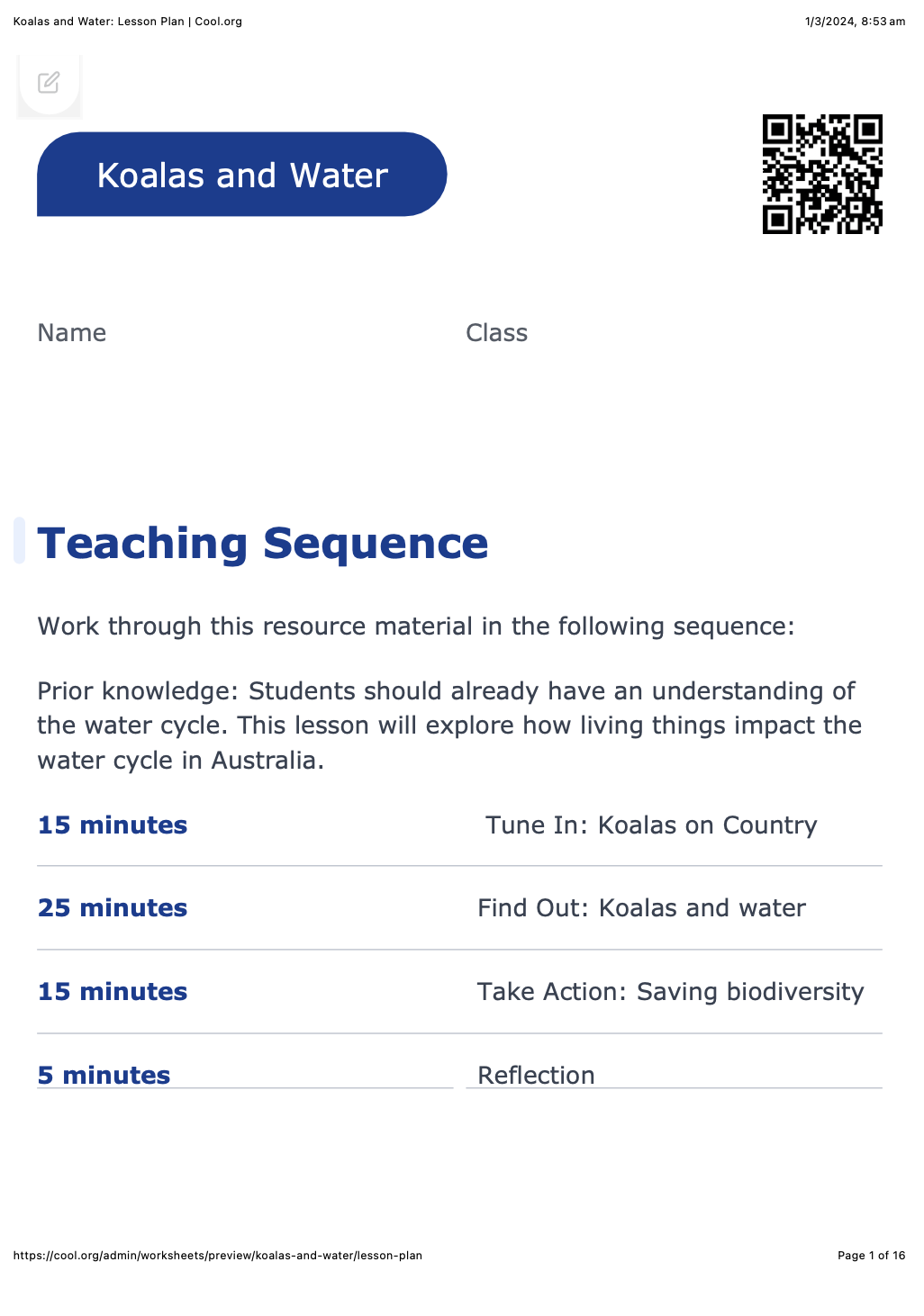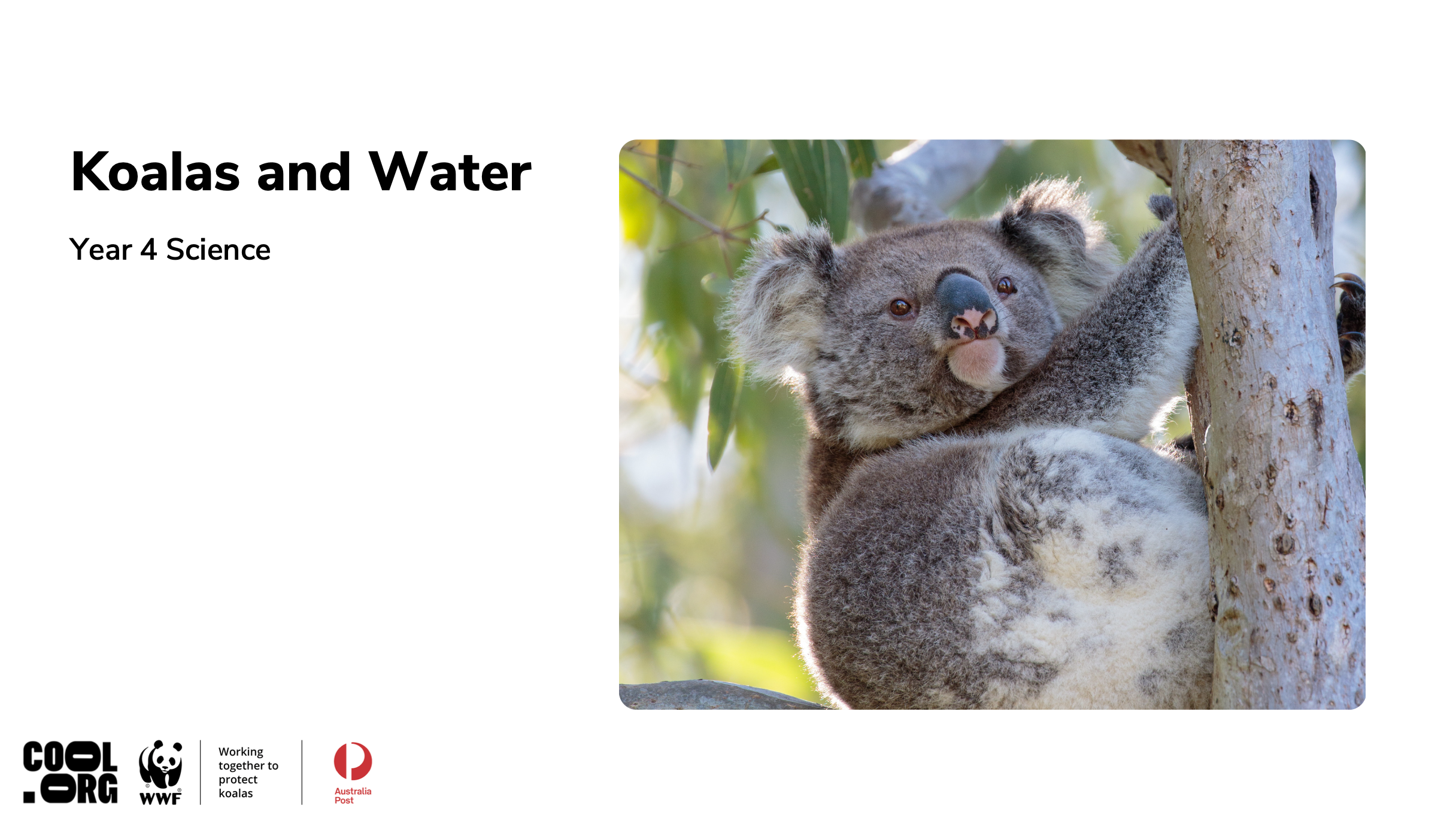Lesson summary
Students will explore how koalas are an indicator species for the health of the water cycle. They will investigate First Nations stories that identify koalas as indicator species for water health. They will look at how living things impact Australia’s water cycle and why biodiversity is important for keeping the water cycle healthy.
Learning intentions:
Students will...
- explore how living things interact with the water cycle.
Success criteria:
Students can...
- explain how biodiversity creates a healthy water cycle
- take action to support koalas and biodiversity.
Lesson guides and printables
Curriculum links
Select your curriculum from the options below.
Lesson details
Skills
This lesson is designed to build students’ competencies in the following skills:
- critical thinking
- curiosity
- reflection
Curriculum Mapping
Australian Curriculum (v9.0) content description:
Year 4 Science:
- identify sources of water and describe key processes in the water cycle, including movement of water through the sky, landscape and ocean; precipitation; evaporation; and condensation (AC9S4U02).
- examine how people use data to develop scientific explanations (AC9S4H01).
Relevant parts of Year 4 achievement standards: Students identify key processes in the water cycle and describe how water cycles through the environment. They explain the role of data in science inquiry.
NSW Syllabus outcomes: ST2-10ES-S
- investigates regular changes caused by interactions between the Earth and the Sun, and changes to the Earth's surface
General capabilities: Critical and Creative Thinking, Ethical Understanding
Cross-curriculum priority: Aboriginal and Torres Strait Islander Histories and Cultures, Sustainability
UN Sustainable Development Goals
UNSDG 15: Protect, restore and promote sustainable use of terrestrial ecosystems, sustainably manage forests, combat desertification, and halt and reverse land degradation and halt biodiversity loss
- Target: 15.3: By 2030, combat desertification, restore degraded land and soil, including land affected by desertification, drought and floods, and strive to achieve a land degradation-neutral world
Resources Required
- Koalas and Water - Visual explainer
Additional Info
This lesson has been created in partnership with WWF-Australia and made possible thanks to its proud supporter, Australia Post.
In 2022, koalas on Australia’s east coast were officially listed as an endangered species, after dramatic population decline. Habitat destruction, climate change and extreme weather events including bushfires and floods have had a significant impact on koalas.
As one of Australia’s most trusted conservation organisations, WWF is working tirelessly to turn this tragedy around with Australia Post joining them in their mission to double koala numbers across eastern Australia by 2050.
Level of teacher scaffolding: High - explicit instruction
Related Professional Learning
What Makes a Species ‘Threatened’? Teaching Biodiversity and Species Protection
Learn about biodiversity and threatened species with Ecologist Thomas Nixon. You will learn what biodiversity is and how it is regulated in Australia, and you will look at some specific case studies that show what is being done across the country to protect our unique biodiversity.



Welcome back!
Don't have an account yet?
Log in with:
Create your free Cool.org account.
Many of our resources are free, with an option to upgrade to Cool+ for premium content.
Already have an account?
Sign up with:
By signing up you accept Cool.org's Terms and Conditions(Opens in new tab) and Privacy Policy(Opens in new tab).